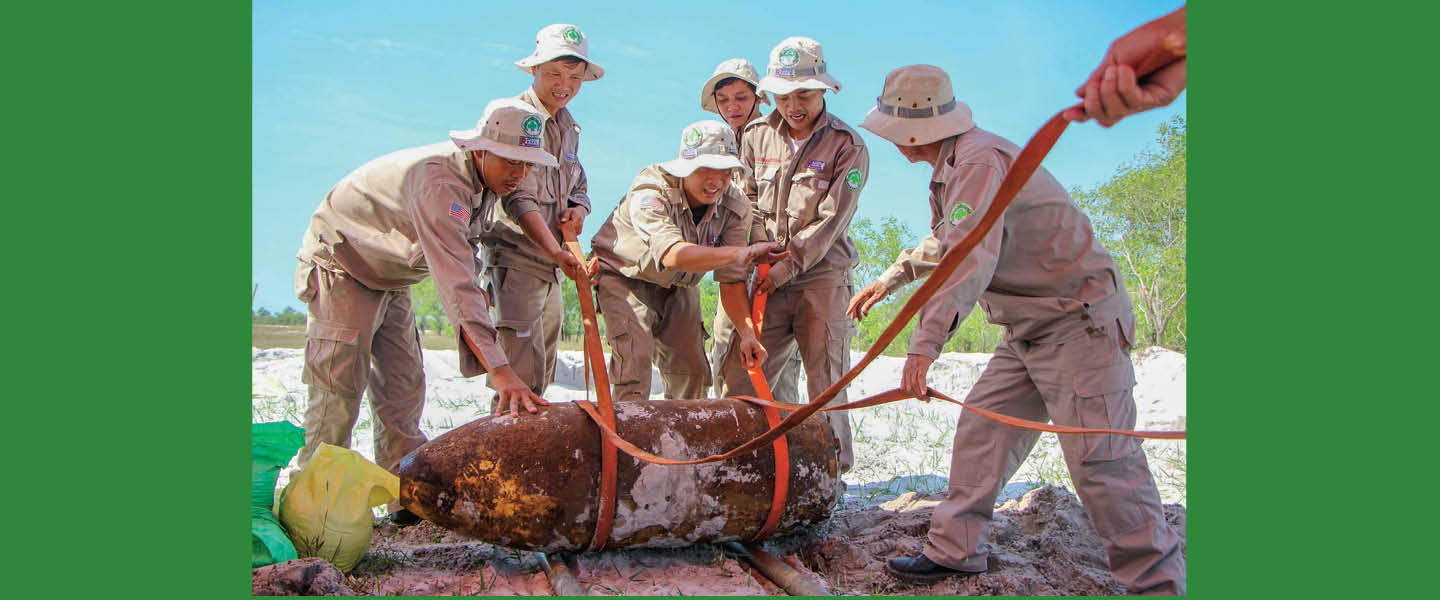The only people Chuck Searcy encountered on the broad, barren field were two young boys. Nearly a quarter-century earlier, the field had been the scene of the battle of Khe Sanh, one of the bloodiest standoffs of the Vietnam War (1954-75).
The boys led Searcy to an unexploded rocket lying by a ditch. One of them reached out to give the bomb a kick when Searcy cried out, “No, stop!”
“It was my first encounter with unexploded ordnance,” Searcy says of that moment in 1992. “I had no idea that I would be dedicating my life to removing them.”
Searcy had served as a U.S. Army soldier in Vietnam in 1968, the same year as the battle of Khe Sanh, and came away disillusioned. As an intelligence analyst, he had access to a range of raw information, from the enemy’s body counts to exaggerated claims of American progress in the war (see timeline slideshow, below).
“We got to see almost everything,” he says. “And I saw that our friends back home were being given information that was not just misleading but deliberate lies.”
The only people Chuck Searcy encountered on the wide, empty field were two young boys. Nearly 25 years earlier, the field had been the scene of the battle of Khe Sanh. It was one of the bloodiest standoffs of the Vietnam War (1954-75).
The boys led Searcy to an unexploded rocket lying by a ditch. One of them reached out to give the bomb a kick when Searcy cried out, “No, stop!”
“It was my first encounter with unexploded ordnance,” Searcy says of that moment in 1992. “I had no idea that I would be dedicating my life to removing them.”
Searcy had served as a U.S. Army soldier in Vietnam in 1968, the same year as the battle of Khe Sanh. He came away disillusioned. He was an intelligence analyst who had access to a range of raw information. He knew everything from the enemy’s body counts to exaggerated claims of American progress in the war (timeline slideshow, below).
“We got to see almost everything,” he says. “And I saw that our friends back home were being given information that was not just misleading but deliberate lies.”

